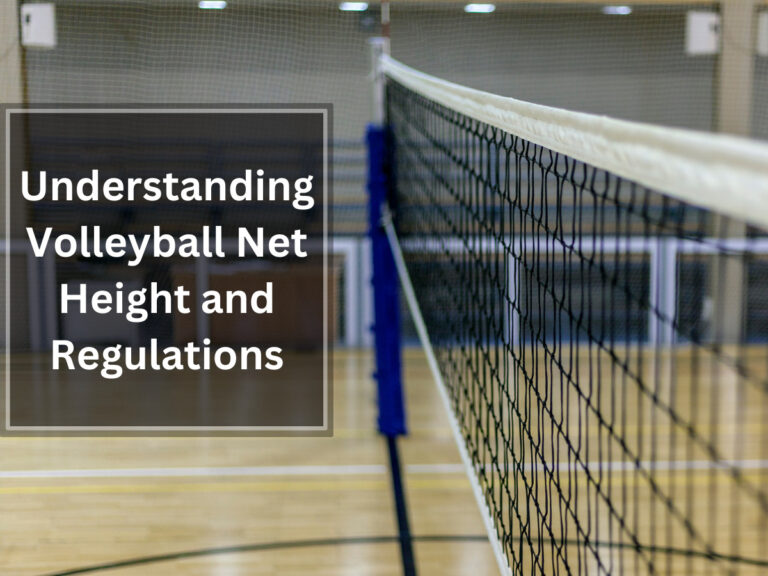What Is an Ace in Volleyball – An Ultimate Guide

Do you dream of serving up a winning shot in volleyball that leaves your opponents stunned? Well, get ready to ace the game!
An ace in volleyball is the ultimate power move, where your serve cannot be returned by the other team, earning you an instant point. It’s all about showcasing your individual skill and making a statement on the court.
In this article, we’ll dive into what exactly constitutes an ace, why it’s so important, how to score one, and some expert strategies to help you increase your chances of acing it every time.
Get ready to unleash your inner ace!
Table of Contents
What Does Ace Mean in Volleyball
An ace in volleyball is when the ball served by one team is unreturned by the other team, resulting in an immediate point. It is a powerful and skillful play that can have a significant impact on the game.
Serving techniques play a crucial role in achieving aces. Different types of serves, such as topspin, float, and jump serves, offer varying levels of effectiveness and difficulty for the receiving team to pass.
A successful ace not only earns a point but also boosts momentum and morale for the serving team while potentially rattling the opposition. To maximize ace opportunities, players should strategize their serves to target weak spots in the opponents’ defense.
Effective communication among teammates also plays a vital role in identifying these weak spots and executing well-placed serves. By utilizing effective serving techniques, recognizing weak spots, and maintaining clear communication, players can increase their chances of scoring valuable aces.
Importance of Aces in Volleyball
To improve your chances of scoring points and putting pressure on the opposing team, it is important to understand the significance of aces in the game.
Aces can be game-changers, both statistically and psychologically. Ace statistics reveal the effectiveness of a player’s serving skills and their ability to disrupt the opponent’s defense. Notable ace performances, such as Ivan Zaytsev’s four consecutive aces or Yuji Nishida’s six in a row, demonstrate the impact that aces can have on momentum and shifting the tides of a match.
The role of serving in generating aces cannot be understated – by strategically targeting weak passers or mixing up serves, players increase their chances of earning an ace. Scoring an ace also provides a psychological advantage, instilling confidence in the server while demoralizing the receiving team.
Understanding and capitalizing on these factors will greatly enhance your performance on the volleyball court.
How Aces Are Scored in Volleyball
Scoring a point in volleyball through an ace happens when the ball served by one team cannot be returned by the other team. Techniques for powerful serves play a crucial role in achieving aces.
By mastering serves like topspin, float, and jump serves, players can increase their chances of scoring an ace. Aces have a significant impact on team momentum as they boost morale and deflate the opponent’s confidence. Psychologically, scoring aces provides a sense of dominance and control over the game.
However, receiving teams can employ strategies to counter aces, such as improving passing skills and anticipating serve placement. Serving accuracy is key to achieving aces since targeting specific spots on the court disrupts the opponent’s defense and increases the chances of an unreturned serve.
Overall, aces not only contribute to individual success but also significantly influence the outcome of volleyball matches.
Strategies for Achieving Aces in Volleyball
Mixing up the serve and targeting weak passers are effective strategies for increasing ace opportunities in the game. To enhance your serving skills and increase your chances of scoring aces, consider the following tips:
Target Weaknesses: Probing serves can help you identify the weakest passer on the opposing team. By consistently targeting them with your serves, you can build pressure and increase your chances of scoring aces.
Vary Serves: Predictability is detrimental to success in volleyball. To keep the opposing team on edge, vary the length and type of your serves. Alternating between different types of serves can catch them off guard and lead to more aces.
Consistent Practice: Dedicate time to consistent serving practice. Focus on developing a rhythm and technique that works for you. Set goals for yourself and work towards achieving them through dedicated practice sessions.
Common Mistakes to Avoid When Serving for an Ace
One common mistake to avoid when serving for an ace is overthinking your target. Many players tend to get caught up in trying to hit the perfect spot on the other side of the court, but this can lead to unnecessary pressure and mistakes. Instead, focus on utilizing effective serving techniques that increase your chances of creating ace opportunities.
One notable mistake is serving too aggressively without considering the situation. While serving aggressively can be a powerful strategy, it’s important to assess the game and opponents before committing fully. Sometimes a more strategic approach may be necessary, such as targeting weak passers or mixing up your serves.
To improve your serving strategies, learn from notable ace examples like Ivan Zaytsev’s four consecutive aces in 2014 or Yuji Nishida’s six in a row in 2019. By studying their techniques and adapting them to your own style, you can enhance your serve accuracy and increase your chances of achieving aces.
How to Improve
To improve your chances of getting aces, target weak passers and mix up your serves to keep the opposing team off balance. Famous players known for their aces include Ivan Zaytsev and Yuji Nishida. Aces can have a significant impact on team morale and momentum, as they often result in immediate points and put pressure on the opposing team. Improving your serving technique and consistency through practice is key to increasing your chances of getting aces.
Frequently Asked Questions
What Is the Difference Between a Regular Ace and a Return Ace in Volleyball?
A regular ace in volleyball is when the served ball results in an immediate point for the serving team, such as landing untouched inside the court. A return ace occurs when the receiver immediately returns the ball over the net, resulting in a point.
How Does the Frequency of Aces Vary at Different Levels of Volleyball?
How does the frequency of aces vary at different levels of volleyball? Serving technique, court dimensions, player height, game strategy, and indoor vs. beach play all impact ace frequency.
Can a Rotational Fault Count as an Ace in Volleyball?
Yes, a rotational fault cannot count as an ace in volleyball. It is important to understand the scoring rules and serving strategies to increase your chances of earning aces. Improving serving techniques can also boost your ace statistics.
Are Aces More Common in Women’s Volleyball or Men’s Volleyball?
Aces in volleyball can vary between women’s and men’s matches. The skill level, serving techniques, strategic implications, psychological impact, and statistical analysis all play a role in determining the frequency and effectiveness of aces in each style of play.
What Is the Record for the Most Consecutive Aces in a Professional Volleyball Match?
The record for the most consecutive aces in a professional volleyball match is held by Kyle Russell, who achieved eight consecutive aces.










